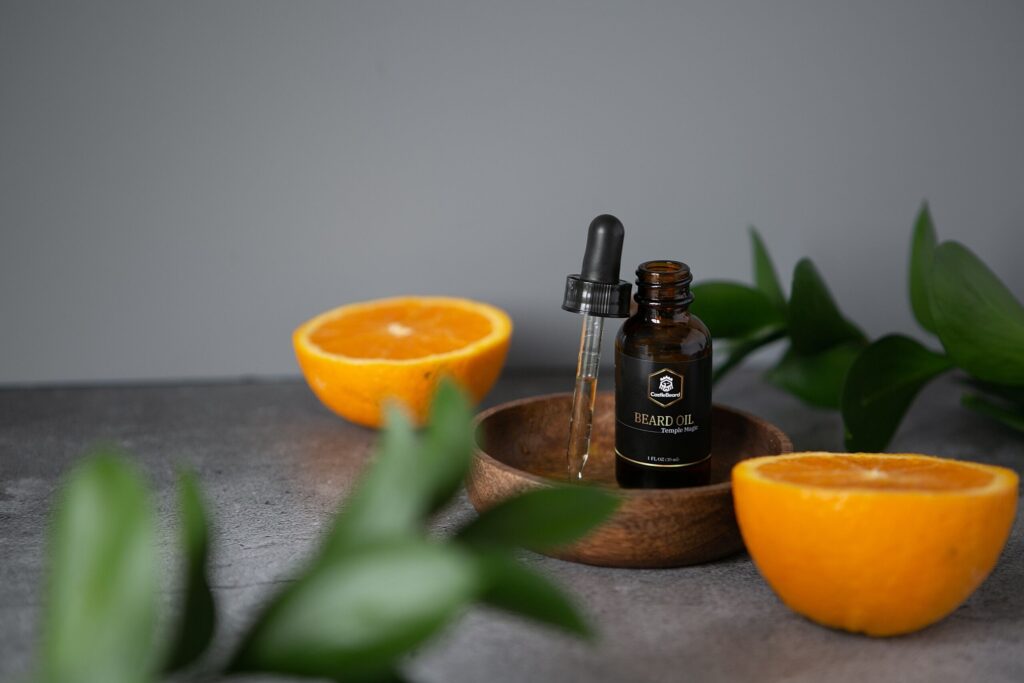Are you a bearded individual looking for a more natural, personalized approach to beard care? Well, look no further. At BeardsDude.com, we understand the importance of finding the perfect beard oil that suits your specific needs. That’s why we’re here to answer the burning question on your mind – can you make your own beard oil at home? In this article, we’ll explore the benefits of creating your own beard oil, the essential ingredients to include, and a step-by-step guide to help you get started on your DIY beard oil journey. So grab your apron and let’s dive into the world of homemade beard care!

Introduction to beard oil
Beard oil has become an essential grooming product for many men with facial hair. It not only helps to moisturize and condition the beard but also promotes healthy growth and prevents common issues like itchiness and dandruff. While there are many commercial beard oil options available in the market, you may be wondering if you can make your own beard oil at home. The good news is, yes, you can! Making your own beard oil allows you to customize the scent and ingredients to suit your preferences and needs. In this article, we will guide you through the process of making your own beard oil, from understanding the benefits and ingredients to step-by-step instructions and safety precautions.
Benefits of using beard oil
Before diving into the world of homemade beard oil, let’s take a moment to understand why using beard oil is beneficial in the first place. Beard oil serves as a moisturizer for both the facial skin and the beard hair. It helps to hydrate the skin, leaving it less dry and itchy, while also softening and conditioning the beard hair. This, in turn, reduces frizz and promotes a healthier-looking and more manageable beard. Furthermore, beard oil can help to prevent beardruff, a common issue caused by dry skin underneath the beard.
Not only does beard oil have physical benefits, but it also provides a pleasing aroma. Many beard oils contain essential oils, which not only add a pleasant scent to the beard but also offer additional benefits like relaxation, stress relief, and even boosting confidence. By making your own beard oil, you can experiment with different essential oil combinations to find the perfect scent that suits your style and mood.
Understanding the ingredients
To make your own beard oil, it’s important to understand the two main types of ingredients: essential oils and carrier oils. Essential oils are highly concentrated plant extracts that provide fragrance and potential therapeutic benefits. They are responsible for the scent of the beard oil and can offer various effects ranging from calming to invigorating. Carrier oils, on the other hand, are typically cold-pressed from nuts, seeds, or fruits and serve as the base of the beard oil. They help to dilute the essential oils and provide the necessary nourishment and hydration to the skin and beard.
Essential oils for beard oil
When it comes to choosing essential oils for your homemade beard oil, the options are endless. Each essential oil carries its own unique scent and potential benefits. Some popular essential oils for beard oil include:
-
Cedarwood: known for its warm, woodsy scent, cedarwood essential oil can help to promote a calm and soothing atmosphere.
-
Sandalwood: with its rich and sweet aroma, sandalwood essential oil is often used for its relaxing and grounding properties.
-
Peppermint: for a refreshing and cooling sensation, peppermint essential oil is a popular choice. It can also help to invigorate the senses.
-
Tea Tree: known for its antibacterial and antifungal properties, tea tree essential oil can help to maintain a healthy and clean beard.
-
Lavender: with its floral and herbaceous scent, lavender essential oil is often used for its calming and stress-relieving effects.
These are just a few examples, and you can mix and match essential oils to create your own unique scent profile.

Carrier oils for beard oil
Carrier oils play a crucial role in beard oil formulation as they provide the necessary hydration and nourishment to both the skin and beard. Here are some common carrier oils used in homemade beard oil recipes:
-
Jojoba oil: known for its similarity to human sebum, jojoba oil is easily absorbed and helps to moisturize and condition the beard.
-
Argan oil: often referred to as “liquid gold,” argan oil is rich in antioxidants and essential fatty acids, promoting a healthy and shiny beard.
-
Sweet almond oil: with its lightweight texture, sweet almond oil is easily absorbed and helps to soften and protect the beard hair.
-
Coconut oil: coconut oil is not only moisturizing but also has antibacterial properties, making it beneficial for the beard and skin.
-
Grapeseed oil: light and non-greasy, grapeseed oil helps to balance the skin’s natural oil production and provides essential nutrients to the beard.
These are just a few examples of carrier oils, and you can choose a single carrier oil or mix different ones to customize your beard oil according to your preferences.
Tools and equipment needed
To make your own beard oil, you’ll need a few tools and equipment. Here’s a list of what you’ll need:
-
Glass bottle with a dropper: This will be used to store and dispense your homemade beard oil. Make sure the bottle is dark-colored to protect the oils from light exposure.
-
Measuring cups or spoons: These will help you accurately measure the essential oils and carrier oils.
-
Mixing bowl or container: Use a clean bowl or container to mix the oils together.
-
Stirring utensil: You’ll need something to stir and mix the oils thoroughly.
-
Funnel: A funnel can be useful for pouring the beard oil into the bottle without any spills.
Make sure all your tools and equipment are clean and sterilized before use to ensure the quality and longevity of your homemade beard oil.

Step-by-step guide to making beard oil
Now that you have a good understanding of the benefits, ingredients, and tools needed, let’s walk through the step-by-step process of making your own beard oil:
-
Gather your ingredients: Choose your preferred essential oils and carrier oils. Remember to consider the desired scent profile and the benefits you seek from the essential oils.
-
Measure the oils: Use your measuring cups or spoons to measure the desired amounts of essential oils and carrier oils. It’s recommended to start with a small batch until you achieve the perfect blend for your beard.
-
Mix the oils: Pour the measured essential oils and carrier oils into your mixing bowl or container. Use a stirring utensil to thoroughly mix the oils together, ensuring that they are well combined.
-
Transfer to the bottle: Using a funnel, carefully pour the mixed beard oil into your glass bottle, ensuring there are no spills or mess.
-
Shake well and let it settle: Once the oil is in the bottle, give it a good shake to further blend the oils. Let the beard oil settle for a few hours or overnight to allow the scents to meld together.
Congratulations! You’ve successfully made your own beard oil at home. Remember, experimentation is key, so feel free to adjust the amounts of essential oils or carrier oils to find the perfect blend that suits your preferences.
Safety precautions
While making your own beard oil can be a rewarding experience, it’s essential to consider safety precautions to ensure that your homemade creation is safe to use. Here are a few important safety tips:
-
Patch test: Before applying the beard oil to your entire beard, perform a patch test on a small area of your skin to check for any allergic reactions or sensitivity.
-
Dilute essential oils: Essential oils are highly concentrated, so it’s crucial to dilute them properly before use. Follow recommended dilution ratios to avoid skin irritation.
-
Avoid sun exposure: Some essential oils can increase sun sensitivity, so it’s best to apply beard oil in the evening or when you won’t be exposed to direct sunlight.
-
Storage: Store your homemade beard oil in a cool, dark place to maintain its quality and prolong its shelf life.
By following these safety precautions, you can enjoy the benefits of your homemade beard oil without any concerns.

Storing and using homemade beard oil
To ensure that your homemade beard oil remains fresh and effective, proper storage is key. As mentioned earlier, store your beard oil in a cool, dark place away from direct sunlight. Exposure to light and heat can degrade the oils and reduce their efficacy over time.
When it comes to using your homemade beard oil, a little goes a long way. Start with a few drops and evenly distribute the oil throughout your beard, focusing on the roots and skin underneath. Massage the oil gently to ensure it reaches the skin and the tips of your beard hair.
Remember, beard oil is not meant to replace regular washing and grooming of your beard. It should be used as a supplement to your existing beard care routine. Use it daily or as needed to keep your beard soft, healthy, and well-nourished.
Alternative options for homemade beard care products
If making your own beard oil seems intimidating or time-consuming, don’t worry! There are alternative options for homemade beard care products that are equally beneficial. Here are a few suggestions:
-
Beard balm: Beard balm is similar to beard oil but has a thicker consistency. It provides similar benefits in terms of moisturizing and conditioning the beard while providing more hold and control for styling purposes.
-
Beard wax: Beard wax is ideal for those with longer beards who need extra hold and shaping ability. It helps to tame flyaways and keep your beard looking neat and well-groomed.
-
Beard conditioner: If you prefer a rinse-out product, you can make your own beard conditioner using natural ingredients like shea butter, coconut oil, and essential oils. This can be used in addition to beard oil to further nourish and hydrate your beard.
Remember, the goal is to find a beard care routine that works best for you. Whether you choose to make your own beard oil or explore other homemade alternatives, the most important thing is to prioritize the health and maintenance of your beard.
In conclusion, making your own beard oil at home is not only a cost-effective option but also allows you to customize the scent and ingredients according to your preferences. By understanding the benefits, ingredients, and step-by-step process, you can embark on a journey of creating your own personalized beard oil. Remember to prioritize safety precautions and proper storage to ensure the quality and effectiveness of your homemade creation. So why wait? Start experimenting and enjoy the rewarding experience of making your own beard oil!

